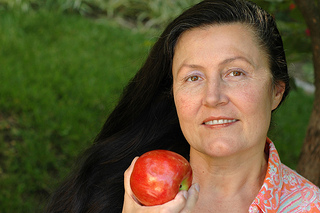Four Great Additions to Your Dental-Healthy Diet
December 22nd, 2022

Calcium from dairy products for strong bones and teeth? Check. Vitamin C from fruits and vegetables for gum health? Check. Protein from lean meats, eggs, and fish to create, maintain, and repair tooth and gum tissue? Check, check, and check.
These nutrients are probably the most well-known players in the production of a dental healthy diet, but there are several other important minerals and vitamins we need to balance the cast. Drs. Peter Vogel, Vijal Vadecha and our team take a look at some of these lesser-known but equally vital actors.
- Phosphorus
Calcium is the mineral we hear about most often for maintaining strong teeth and bones, but it doesn’t act alone. Phosphorus is necessary for our bodies to make full use of calcium. Phosphorus is absorbed best from animal foods like meat, fish, and poultry, but it can also be found in beans, nuts, whole grains, and dairy products.
- Magnesium
Magnesium also works with calcium, and promotes bone density and the strength of our hard enamel. If you are looking to add magnesium to your diet, you have a spectacular variety of options, including salmon, tuna, chickpeas, green leafy vegetables, nuts, avocados, seeds, brown rice—even dark chocolate!
- Vitamin A
This vitamin is essential for the health and healing of our mucous membranes, which include our gums and the soft membranes in our mouths. Vitamin A is found in animal products such as dairy foods, meat, and liver, or formed from beta-carotenes, found in plant foods such as carrots, peppers, pumpkin, squash, and sweet potatoes.
- Vitamin D
Even though we might make sure to get plenty of calcium to keep our teeth and bones healthy, we will never get the most out of a calcium-rich diet without vitamin D. Vitamin D not only helps with bone density, it actually helps our bodies absorb calcium so we can put it to work for us. It has also been shown to promote gum health by reducing the inflammation that can lead to gum disease. Sunlight exposure leads our bodies to produce vitamin D naturally, but it is available in foods as well. Fatty fish, such as salmon, tuna, and herring, are a rich source of the vitamin, as are cod liver oil and egg yolks. The only plant that produces vitamin D is the mushroom, but it is also available in foods fortified with vitamin D, such as cow’s milk, soy milk, orange juice, and even many cereals.
You want your diet to be part of your healthy lifestyle, and more and more we are coming to discover just how important a balanced diet is to our dental health as well. The fascinating fact is that all of the nutrients which support our dental health work together and depend on each other to play their roles effectively. Talk to Drs. Peter Vogel, Vijal Vadecha at your next checkup at our Anthem office for some suggestions on finding the dietary balance that works best for you.
Best Ways to Prevent Bad Breath
December 15th, 2022

Nobody likes bad breath, and although it can sometimes be difficult to tell if you have it, it is always better to practice good oral health than risk having a smelly mouth. There are many ways to reduce or eliminate bad breath, some are definitely more effective and longer lasting than others. Check out ways to do so below.
Floss Regularly
As difficult as it can be to remember to floss regularly, when it comes to bad breath, flossing is one of the easiest and most cost effective ways to freshen your mouth. See, flossing reduces the plaque and bacteria found in areas of your mouth that a toothbrush simply can't reach, and in turn, it rids your mouth of the smell associated with that bacteria. While flossing may not eliminate bad breath on its own, if you do it along with other health oral hygiene habits like brushing, then you may just develop a fresher smelling mouth.
Use Mouthwash
Using some sort of mouthwash can really freshen up your breath, especially if you find it still smells after brushing and flossing. There is a wide variety of mouthwash products on the market, however, you can also create your own by simply using baking soda mixed with water.
Always Brush after You Sleep
Whether after taking a nap, or having a full night of sleep, you will want to brush your teeth in order to reduce bad breath. The truth is, bacteria accumulates in your mouth while you are sleeping (even during a short nap) and that is ultimately the source of bad breath. So next time you wake from a good slumber, give your mouth some brushing and you will find it makes a big difference in the freshness of your breath.
There are many ways to freshen your breath beyond just using gum or mints, the above mentioned are just a few for you to try. Test them out and you will likely find your bad breath problem is solved, or at least considerably reduced. Of course, you can always ask Drs. Peter Vogel, Vijal Vadecha at your next visit to our Anthem office.
Breaking Bad Oral Habits
December 15th, 2022

The effects of bad oral habits are something our team sees all too often. You might have bad oral habits that stem from childhood, possibly because your parents did not know about proper oral care or force you to follow it. Or, your bad habits could develop gradually, like slacking on your frequency of brushing.
Bad oral habits can lead to tooth decay, gum disease, and consequences such as losing teeth and experiencing bad pain. They may be deeply ingrained and easy to continue, but you can break them with a little effort. Focus on developing good habits to replace your current ones, and eating a diet that is healthy for your teeth.
Replace Bad Habits with Good
Breaking your bad oral habits may not be as difficult as you expect when you focus instead on developing good habits. These new good habits can naturally replace your bad habits.
- Brush your teeth after each meal or at least twice a day.
- Visit a dentist every six months for an exam and a professional cleaning.
- Floss your teeth every day.
These good habits may not seem natural, so you can take steps to make sure you follow these behaviors. For example, make a daily checklist with your scheduled sessions of brushing and flossing your teeth and using mouthwash. You can also set a timer to be sure you brush your teeth for the full recommended two minutes.
Eat Properly
Poor eating habits can be detrimental to your teeth. A common mistake is to let food, especially carbohydrates such as starch and sugar, stay on your teeth for a long time. You can stop doing this by rinsing your mouth with water after each meal or snack. Also, avoid candy and soft drinks between meals, since the sugar sits on your teeth.
A healthy diet provides the nutrients you need to maintain strong teeth. The mineral calcium is key for healthy teeth, so try to get your three daily servings of high-calcium foods, such as low-fat milk or yogurt, canned fish, or fortified soy or almond milk. Also include vegetables and fruits, which have a high water content.
If you need more tips about breaking your bad oral health habits, contact our Anthem office and speak with Drs. Peter Vogel, Vijal Vadecha or a member of our team.
I’m on a diet and getting MORE cavities!
December 8th, 2022

Health gurus rave about replacing unhealthy food choices with healthy ones in your diet. If you want to maintain your beautiful smile as well as your waistline, choose foods that are good for your teeth and good for losing weight. This article will discuss some of the worst healthy foods for your teeth and gums, and what you can do to continue to enjoy them.
When watching your weight, snacks heavy in sugar and starch are the first target for elimination. You want to trade those empty calories for something with more nutritional value. A healthier snack is fruit and vegetables. When you are substituting empty calories with whole foods such as fruits and vegetables, consider a few implications for your dental health.
The most acidic fruits are grapes, grapefruit, and strawberries. Want to know the number-one worst healthy food for your tooth enamel? Apples! An apple a day may keep the doctor away but you may soon be calling your dentist.
Another healthy food often incorporated into dieting is salads. But consider what you put in those salads. Salad dressings are filled with vinegar and sweeteners. These make a salad very acidic and can change the pH of your mouth from alkaline, which is good for your teeth and gums, to acidic, which puts your smile at risk for erosion and decay.
Last but not least is diet soda. You might be cutting down on the calories but you are still putting your teeth at risk for decay. Though calories are reduced, the acid is not.
You do not need to eliminate any of these foods from your diet. Simply alter what you do after eating these foods to decrease the amount of acid your teeth are exposed to.
During your next visit to Daisy Mountain Dentistry in our Anthem office, we can discuss your diet. We may recommend using certain products to fortify your teeth or change the way you routinely care for your teeth.
Please enjoy the wonderful whole foods that are great for a healthy waistline. A healthy waistline and a healthy smile have a positive influence on your general health. A healthier you is a happier you. The happier you are, the more you smile. Keep your smile brilliant and beautiful with the care your teeth deserve at the practice of Drs. Peter Vogel, Vijal Vadecha.


